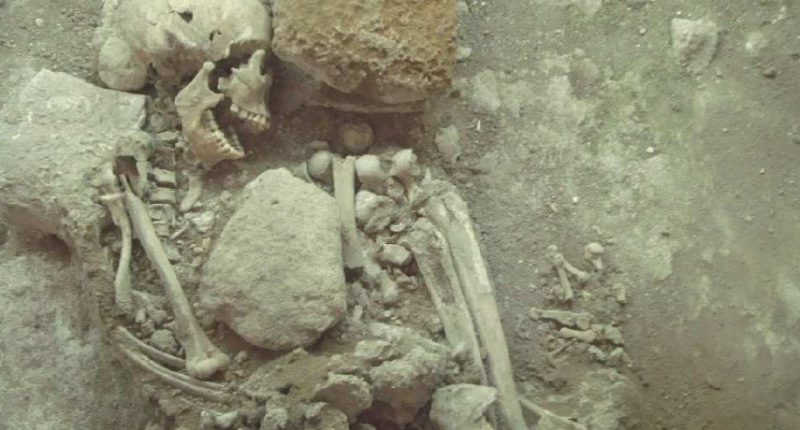RESEARCHERS believe they have uncovered the real identity of a skeleton discovered years ago in Mexico.
In 1971, archeologists excavated a burial site underneath the palace of Hernán Cortés in Mexico.
Discovered on the site was a skeleton in a fetal position that researchers believed to be a monk.
Juan Leyva, the monk, was thought to have served the Marchioness Juana de Zúñiga y Arellano, wife of Cortés.
But now, a new analysis reveals that the bones belonged to a middle-aged Indigenous woman instead.
A team of historians came to this conclusion after finding a 16th-century Franciscan codex at the site.
The codex tells the story of how Leyva slept with his head in a niche in the wall.
It also mentioned that the monk was eventually buried next to the gate of the old house.
This new insight suggests that a skeleton with a twisted neck at the palace’s entrance could instead be Leyva, according to a statement by Mexico’s National Institute of Anthropology and History (INAH).
“A recent study of the skeleton, which lies beneath the enclosure, reveals that it actually corresponds to a Tlahuica woman, an Aztec tribe that founded its lordship and tecpan on the Cuauhnáhuac hill,” an English translation of the statement reads.
Most read in News Tech
Researchers were inclined to take a look at the burial site – which has served as a museum for the past 50 years – after an earthquake struck in 2017.
The new analysis was presented in a published report by INAH anthropologists Pablo Neptalí Monterroso Rivas and Isabel Bertha Garza Gómez.
The team revealed that both the skull and the pelvis suggest the person was female.
It’s also believed that she was between 30 to 40 years old when she died, Monterroso Rivas and Garza Gómez noted in the report.
The skeleton’s fetal-like burial position along with cranial flattening indicates an Indigenous origin.
Anthropologists believe that the Tlahuica woman was buried very close to the time that Cuauhnáhuac fell to the Spanish invasion.
In an email to Live Science, Monterroso Rivas said that, rather than a traditional cemetery-type burial, “it would be more pertinent to think of a series of ritual events, perhaps of sacrifice, with the Tlahuica woman being the last to take place.”









